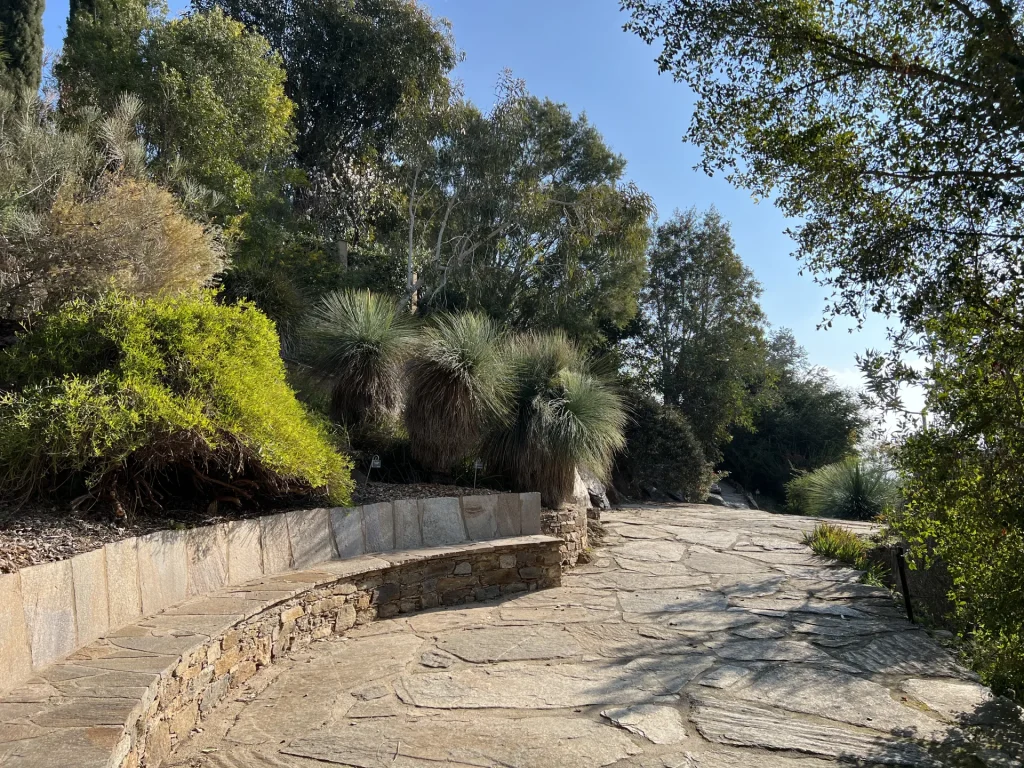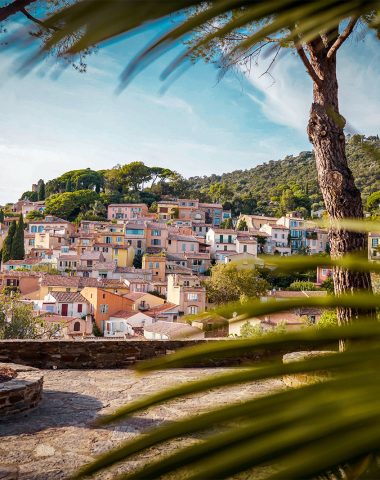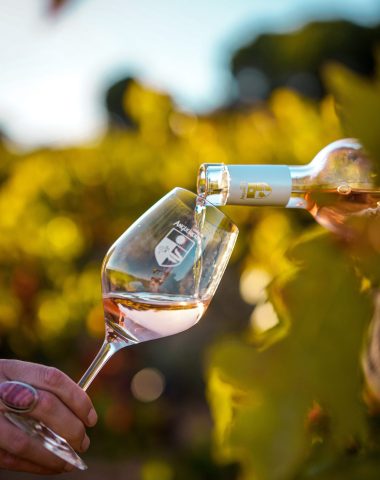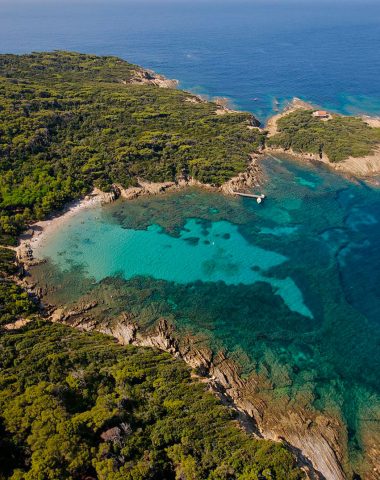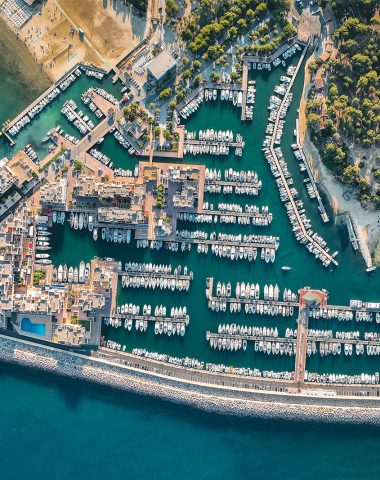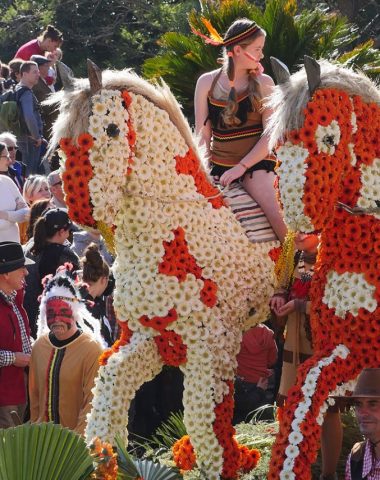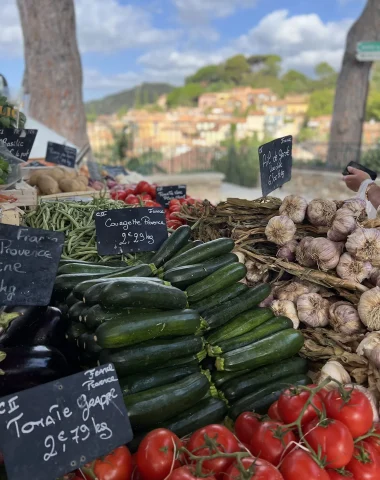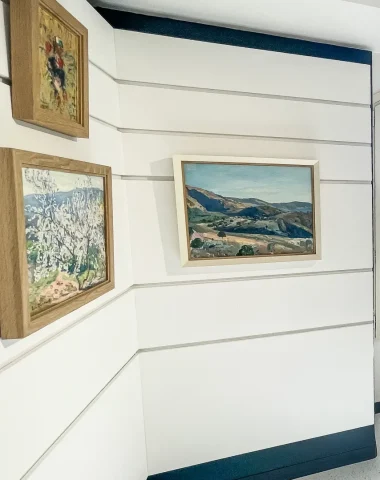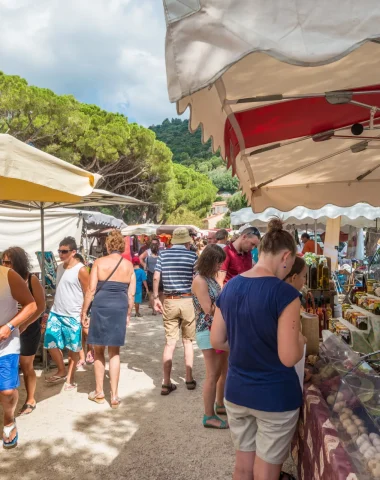Are you ready to embark on a whirlwind tour of the most beautiful village in Provence Côte d’Azur? Even if you’re short on time, fear not! Our village sightseeing tour has carefully curated the absolute must-see sights that will leave you in awe during your first visit. However, if you find yourself with ample time to explore, we’ve got a special recommendation just for you! So, where shall we begin?
The roof terrace of the House of Associations
On this spacious terrace, observe the village perched at an altitude of 180m, proudly overlooking the plain. It’s a landscape often found on postcards. When you turn around, you’ll see the mairie (town hall) of Bormes les Mimosas, an old school built in 1892, bearing the city’s coat of arms: a golden lion crowned with silver on a blue background.
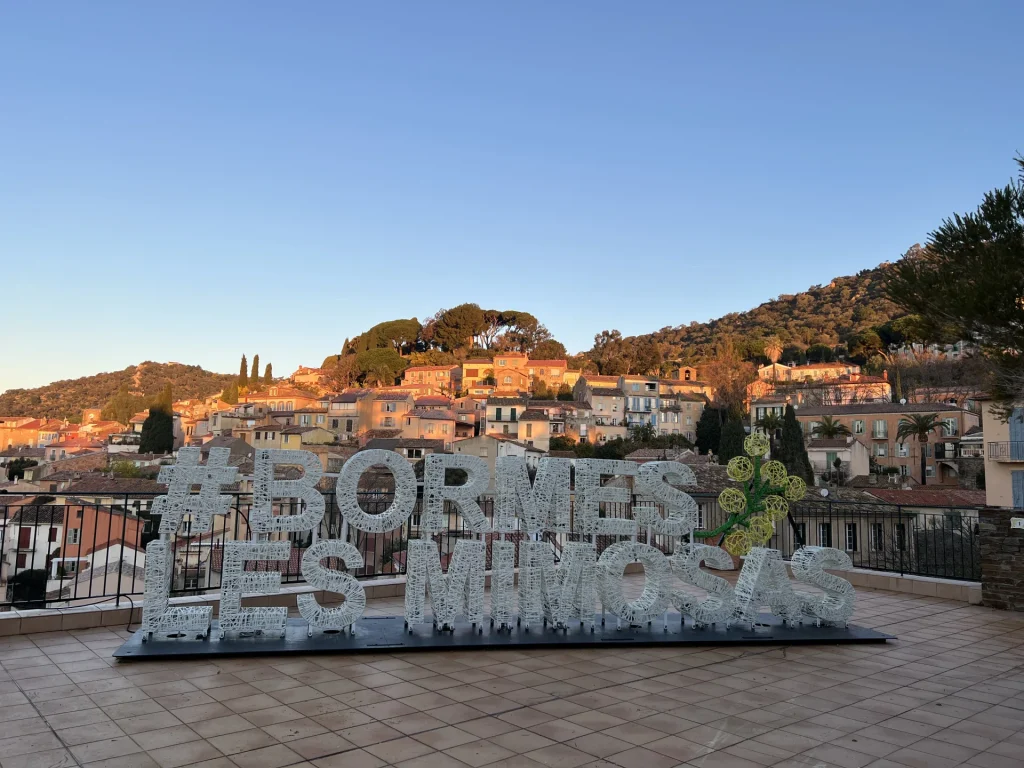
Saint-François square
Discover on this square the renowned Provençal market of Bormes every Wednesday morning during the season. And that’s not all – throughout the year, in the afternoons, immerse yourself in lively pétanque tournaments. While you’re here, take in the remnants of a windmill, once a vital grain-grinding hub of yesteryears.
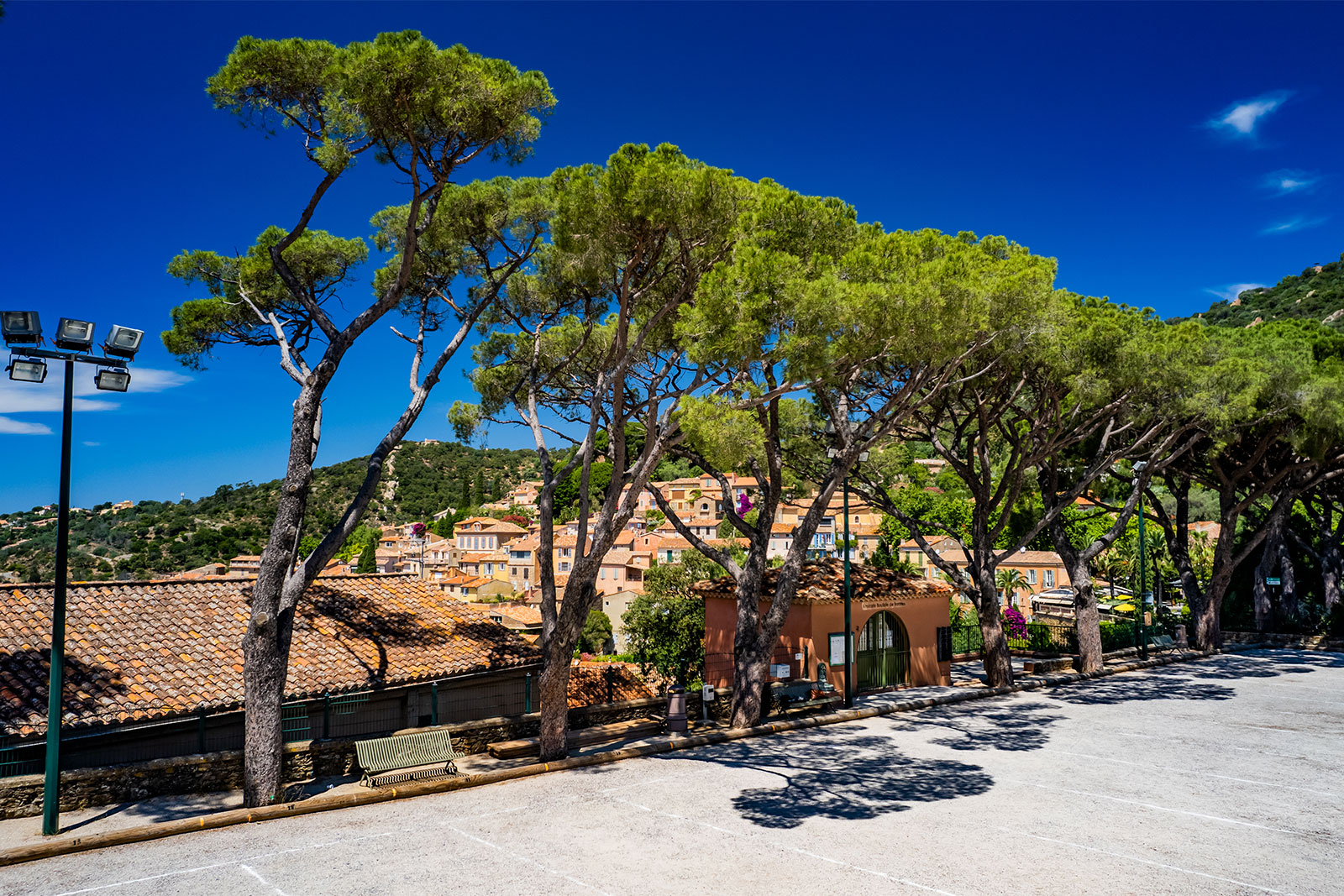
The Saint-François de Paule chapel and its historic cemetery
This chapel was built in 1560 in tribute to Saint-François de Paule, who delivered the village from the Black Plague in 1481. Appreciate its Provençal Romanesque style adorned with contemporary stained glass. In its garden of tropical plants lies the old cemetery where the painter and engraver Jean-Charles Cazin is laid to rest.
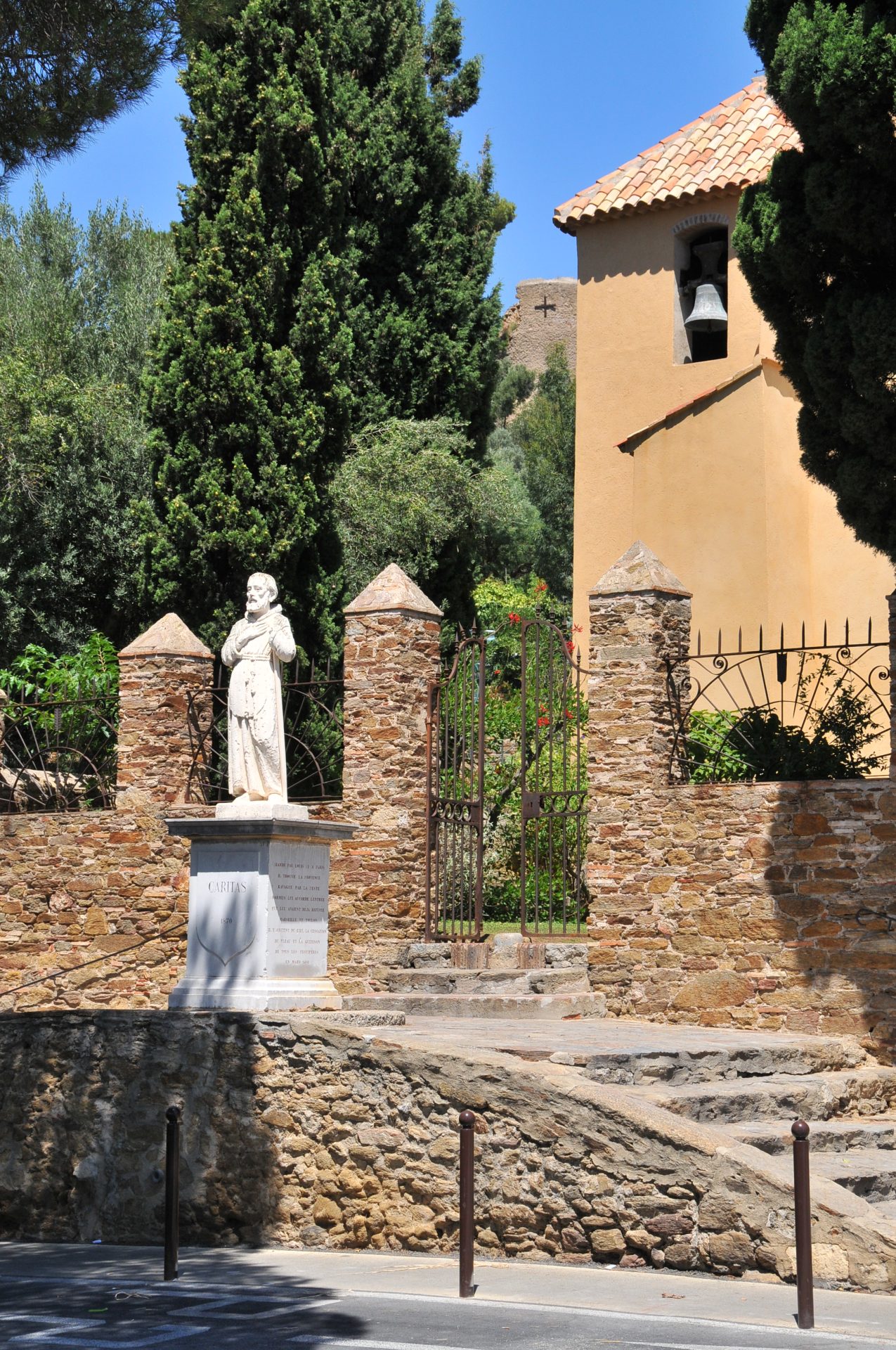
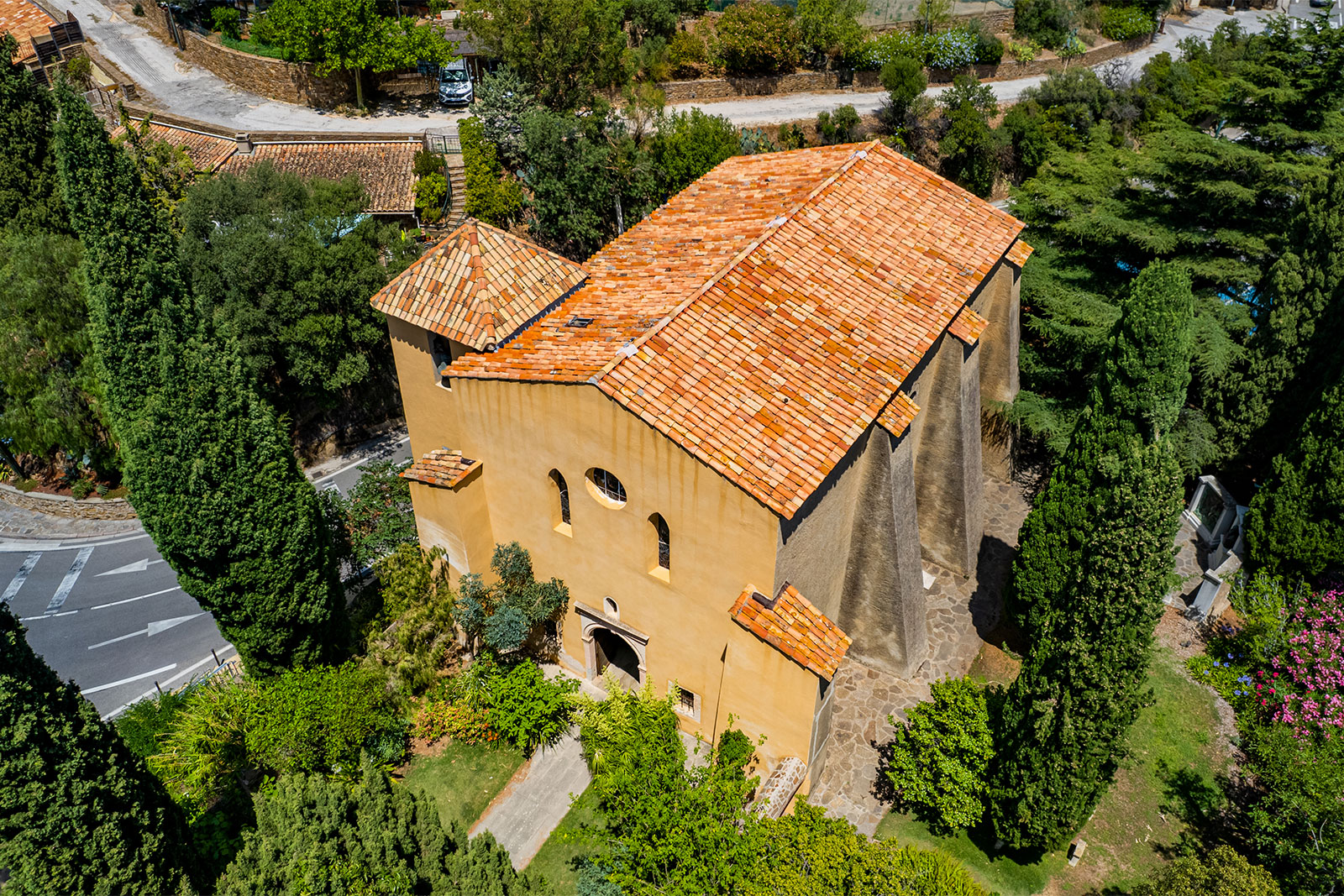
The orangery path and the “draille des bredouille
Our journey continues along the picturesque Chemin de l’orangerie and draille des bredouille, two enchanting paths that will lead us to the oldest part of the village dating back to the 12th century. As we stroll along the ancient ramparts constructed with Bormes stone, known as micaschist, keep an eye out for those who venture onto the Draille des Bredouilles! Legend has it that it derives its name from hunters who, returning empty-handed, preferred to remain unseen on Place Gambetta, concealing their pride.
Le pous d’amoun (well of love)
Under the shade of a magnificent faux-pepper tree adorned with delicate pink berries, we’ll find ourselves at the well of love, known as Le pous d’amoun. This splendidly crafted dry stone well, a quintessential symbol of Provence, invites you to pause and contemplate its timeless beauty.
The castle esplanade and its panorama
Prepare to ascend to new heights as we arrive at the castle esplanade, the pinnacle of the village. From this vantage point, an awe-inspiring panorama unfolds before your eyes. Take in the sweeping views of the Batailler plain, the marina, the Favière district, and the majestic Cap Bénat. Gaze upon the azure waters as Ile du Levant and Port-Cros emerge on the horizon, captivating your imagination. Across from this breathtaking vista, you’ll discover the Chemin des Oratoires (GR 90), leading to the Notre-Dame de Constance chapel perched 324 meters above sea level. Here, an extraordinary 2.3-meter-high sculpture, “La Victoire,” created by sculptor Christophe Charbonnel in 2017, stands as a testament to triumph and resilience.
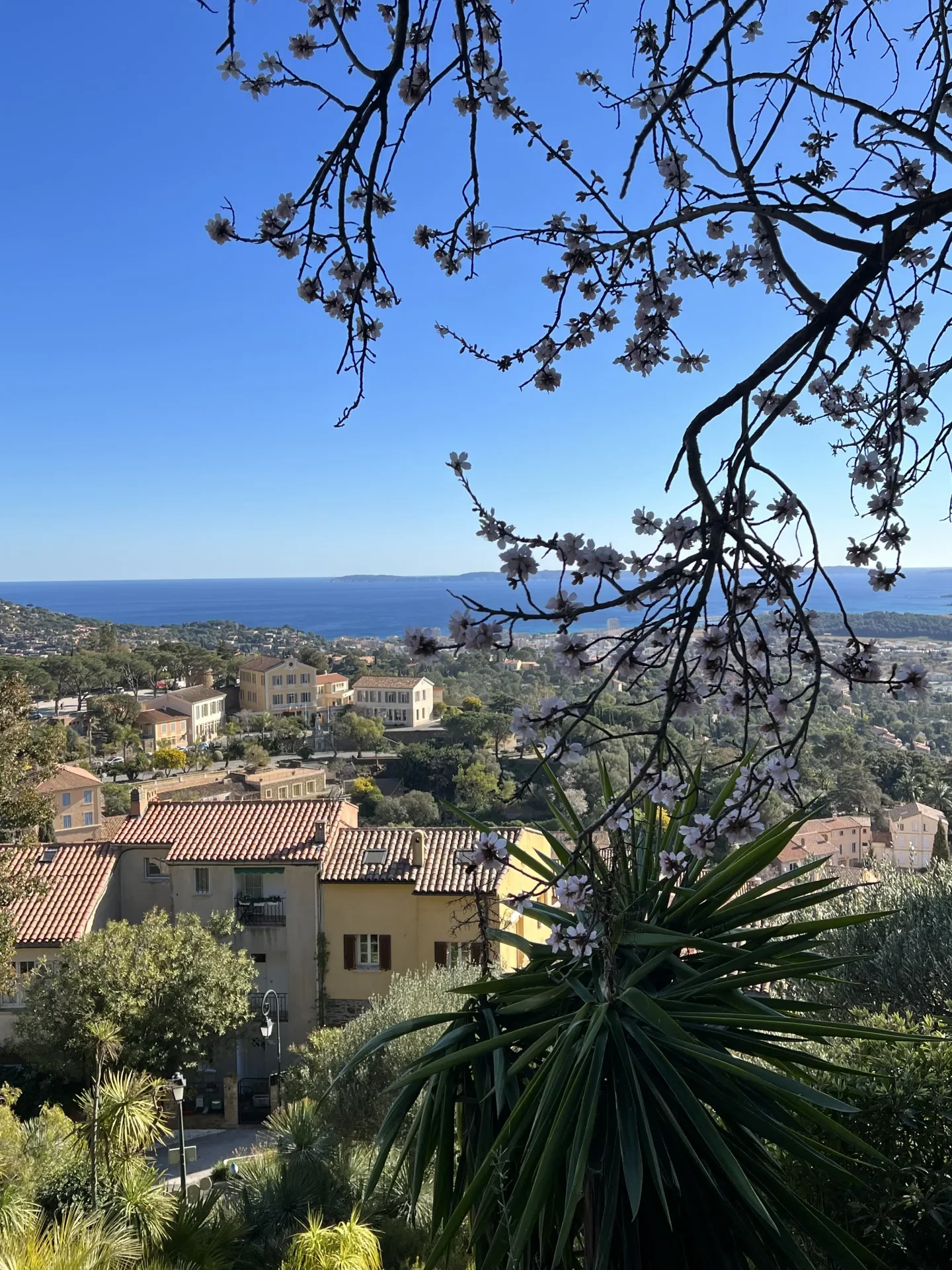
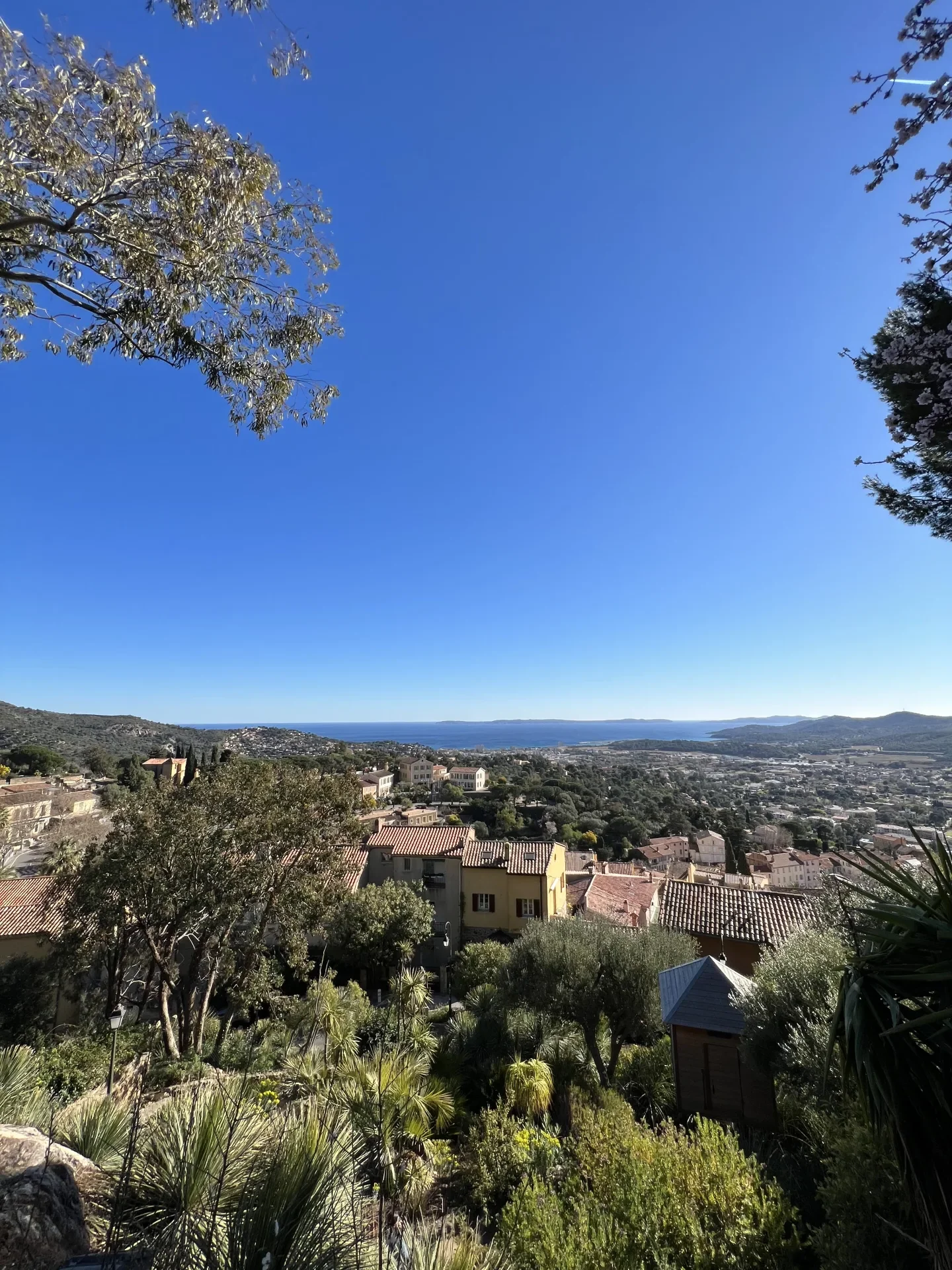
The castle of the Lords of Fos
This private castle, built between the 13th and 14th centuries, was the seat of the Counts of Provence. Classified as a historic monument in 1931, it retains its original ramparts and loopholes.
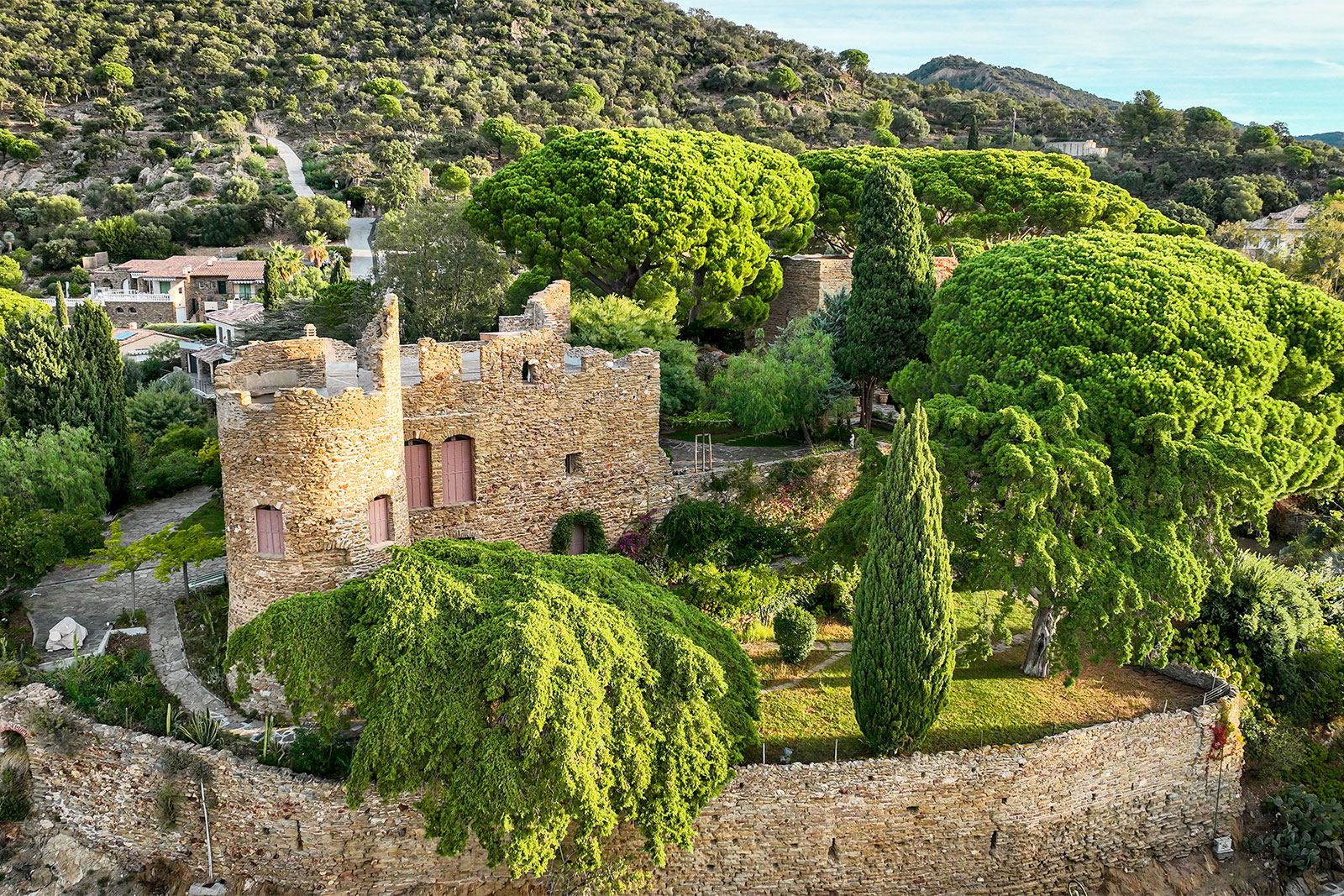
The Isclou d’Amour square
Our next stop takes us to the enchanting Place de l’Isclou d’Amour, a meeting place for lovers. Immerse yourself in the Provencal ambiance as you drink in the magnificent views of the surrounding islands. Take a moment to bask in the coolness of the fountain, sheltered by resplendent hibiscus bushes, lending an air of tranquility and romance to the square.
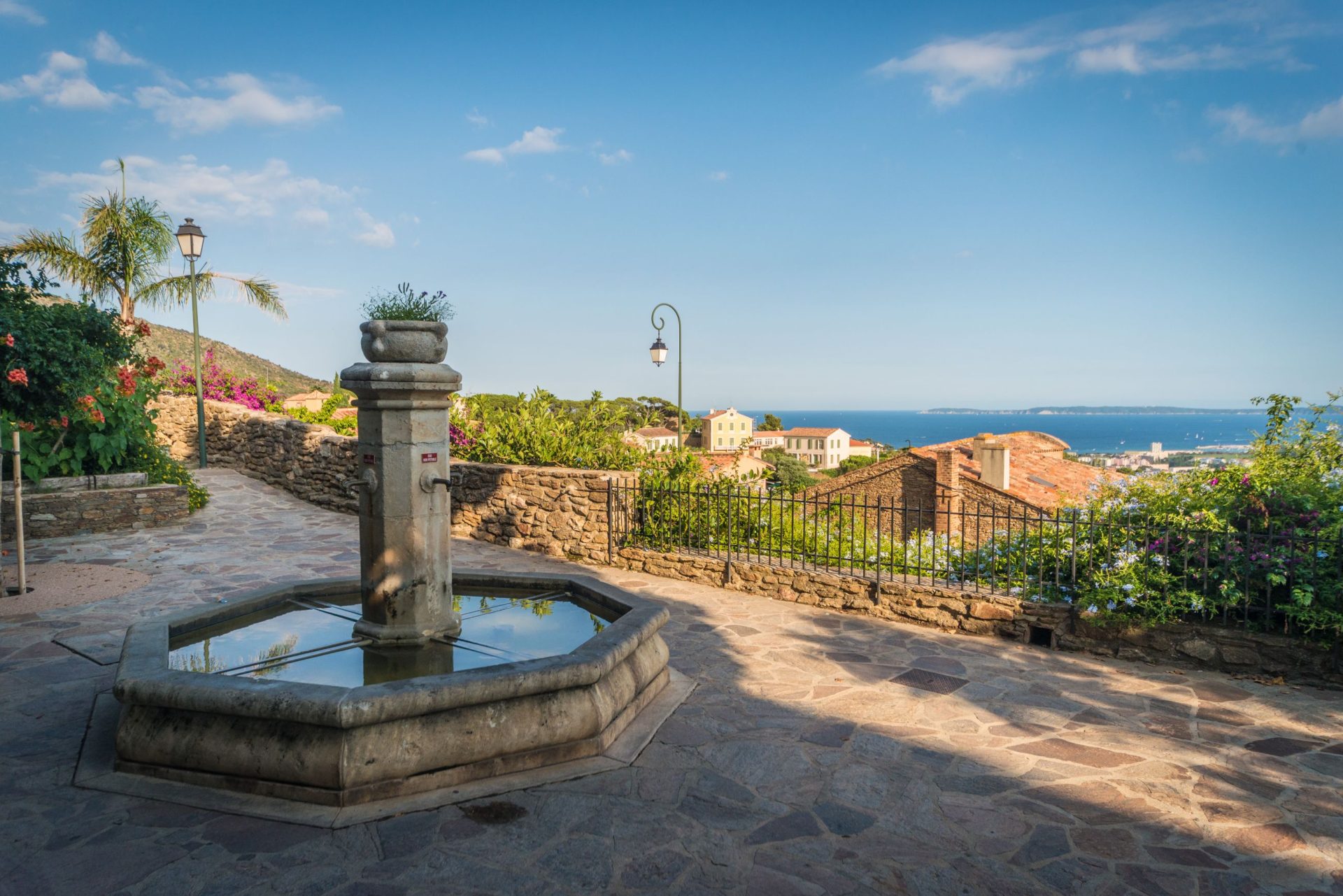
The cuberts
Prepare to uncover a hidden gem as we meander through the cuberts, covered passageways nestled beneath the village houses. These charming corridors, so characteristic of Bormes les Mimosas, served a practical purpose in the past, storing hay for cattle feed while also providing convenient shortcuts for villagers navigating the village’s maze-like streets.
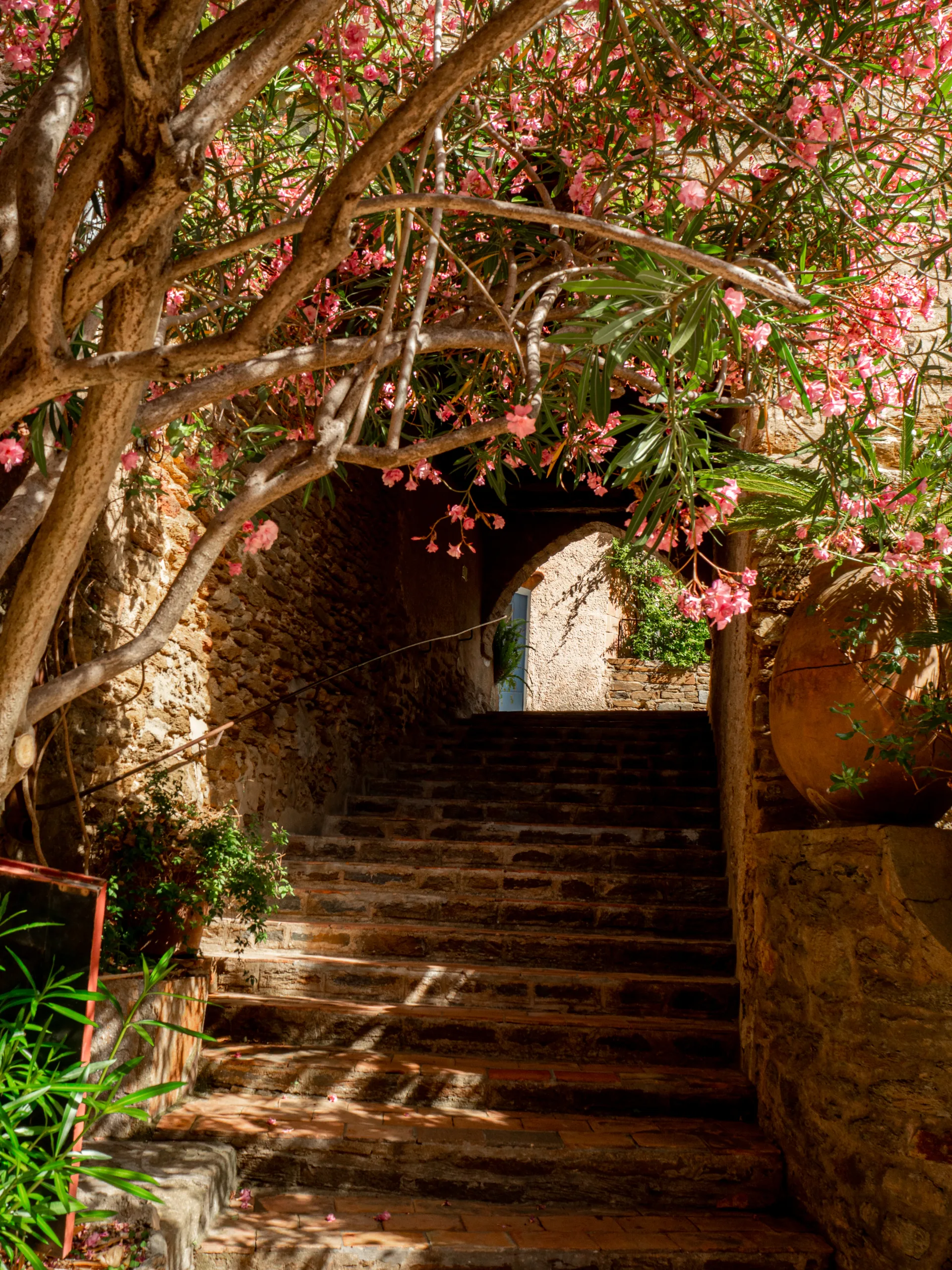
Poulid Cantoun square
Find yourself at peace as we arrive at the tranquil Poulid Cantoun square, nestled in the heart of the village. Here, bougainvillea, pepper trees, and rubber trees intermingle, creating a soothing atmosphere. Allow your senses to be captivated by the architectural marvels that surround you, including the 18th-century Clock Tower, the remnants of the old watchtower, and the weathered remains of the ramparts.
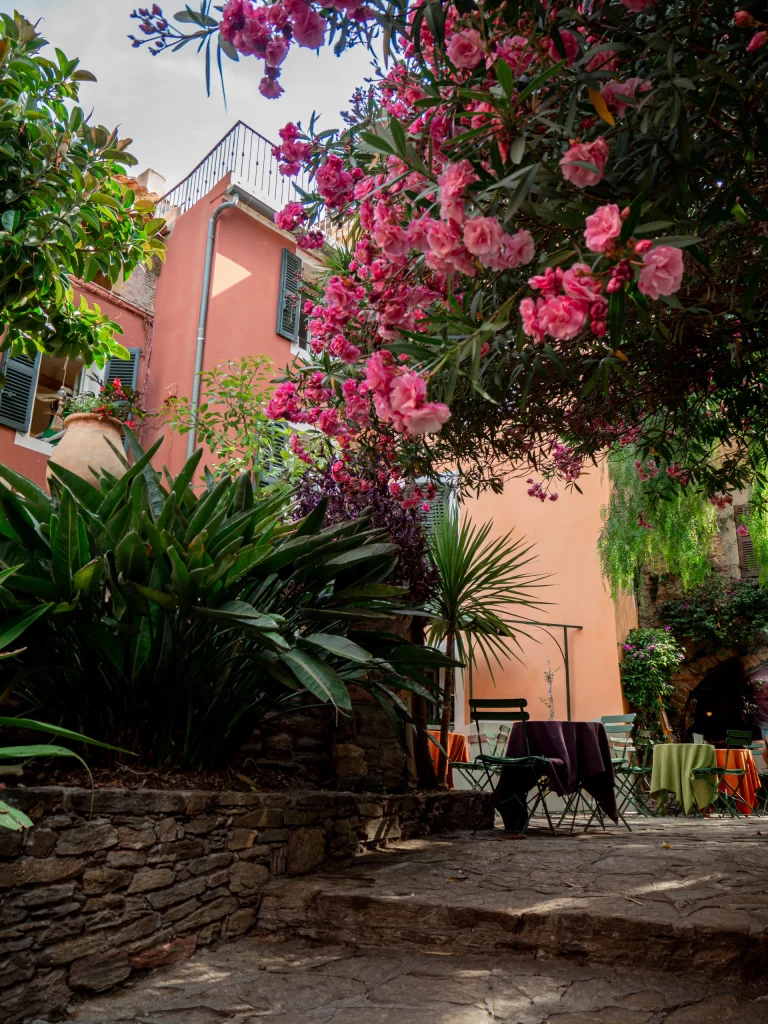
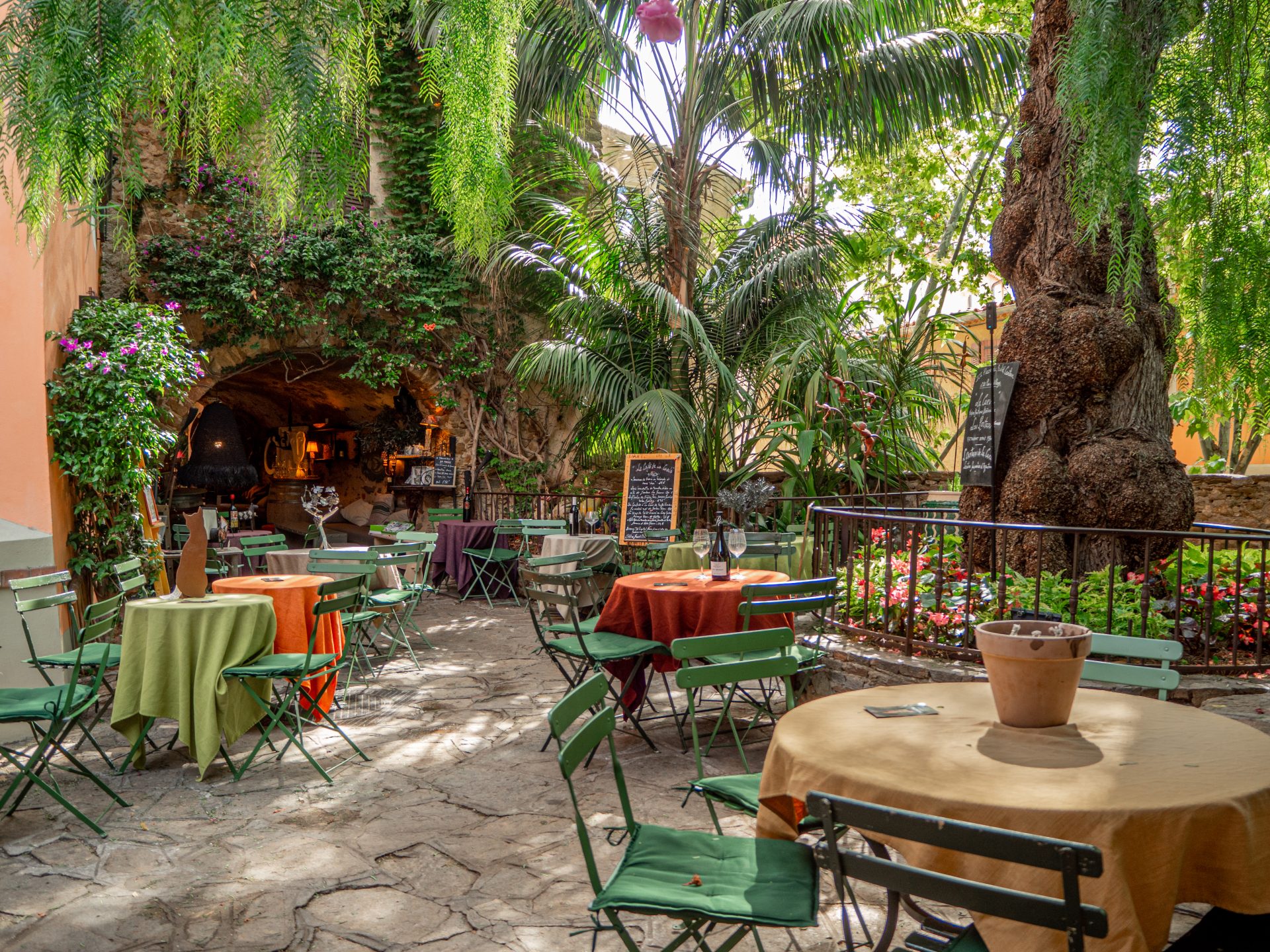
Bormes Museum of History and Art (MHAB)
A treasure trove of history and art awaits as we enter the Bormes Museum of History and Art (MHAB), housed within the former town hall, which served multiple functions, including a school, prison, and court, in the 18th century. Let the enchantment of the MHAB’s five floors, crafted from Bormes stone, sweep you away. Marvel at the impressive coffered ceiling, explore the charming garden, and take in the panoramic terrace that offers a sweeping vista. Equipped with a touch-screen tablet, embark on an immersive journey through 2,400 years of captivating history.
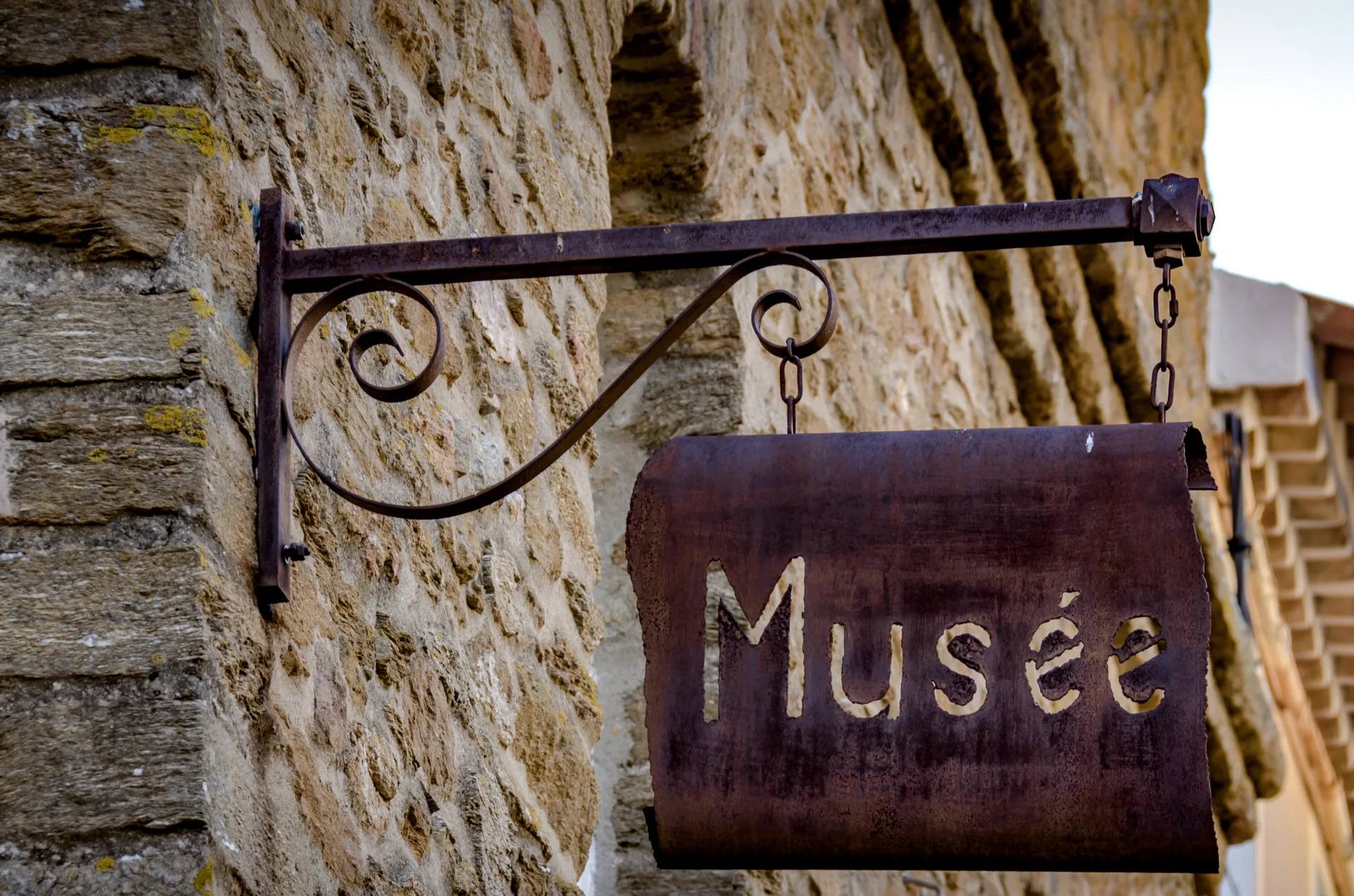
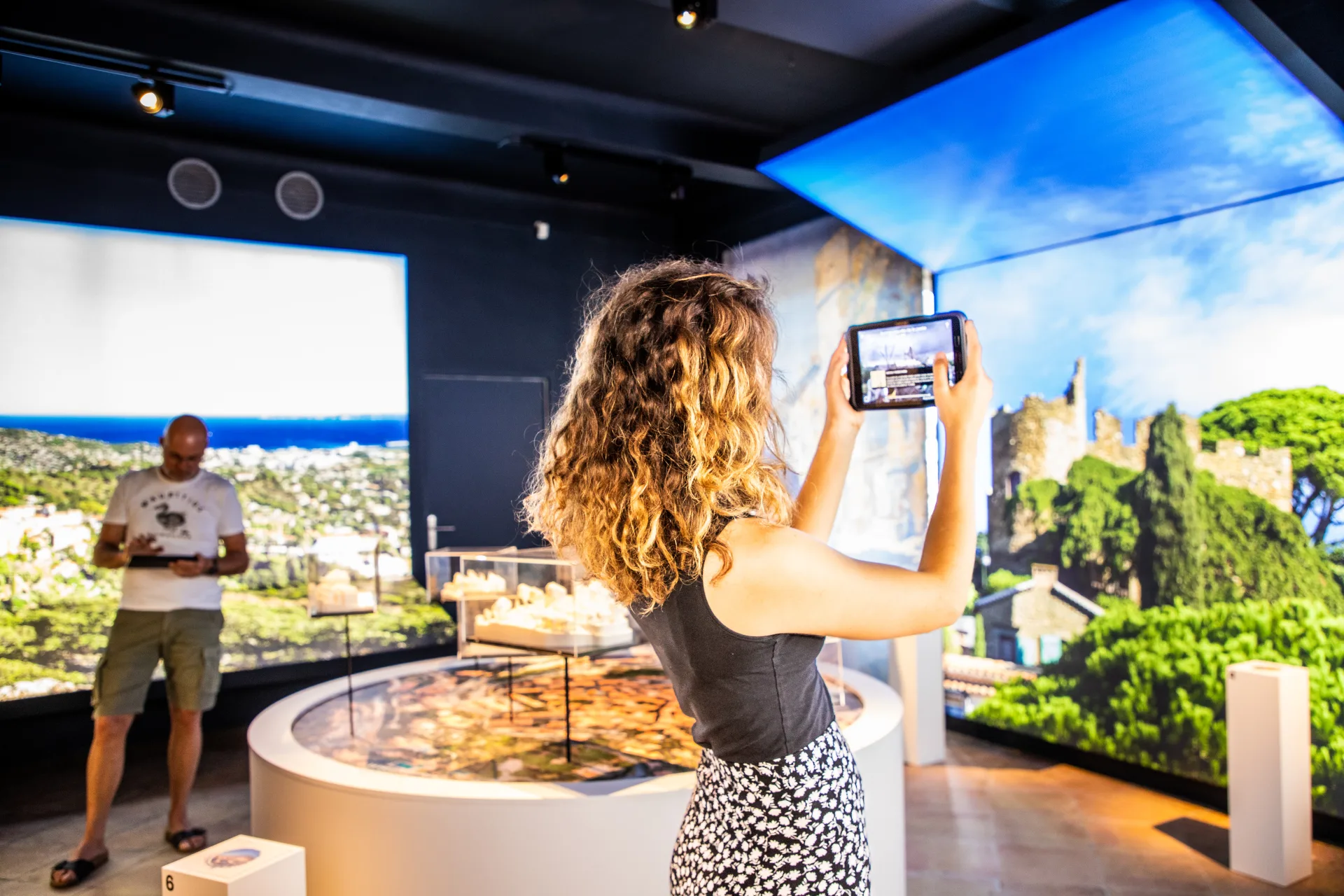
Rue Rompi Cuou (ass-breaker street)
Prepare to descend into Rue Rompi Cuou, a street with a whimsically evocative name, meaning “ass-breaker.” Venture down its 83 steps, which wind through a labyrinth of flower-filled lanes and cuberts, leading you to the very heart of the village.
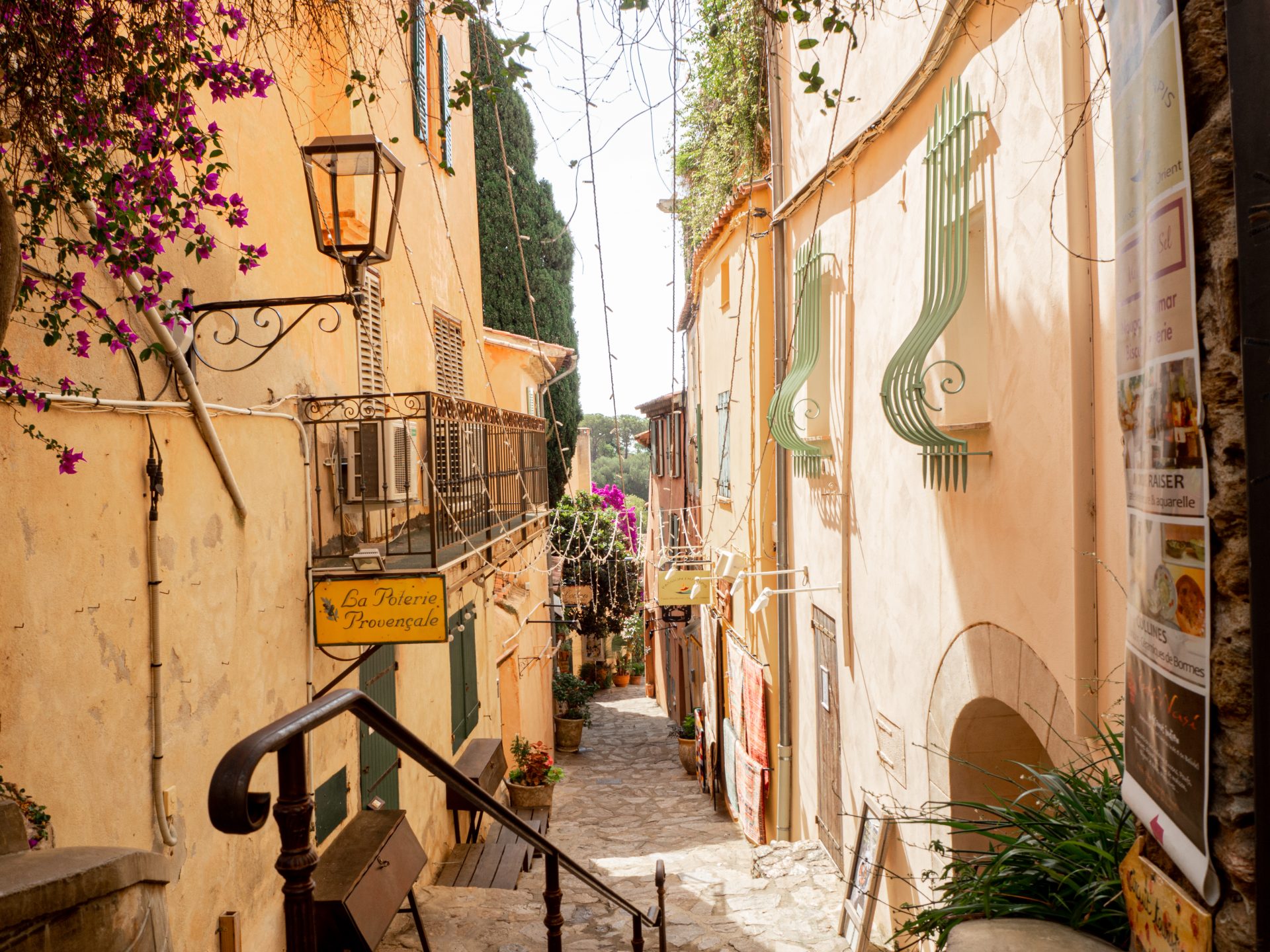
Pouverin square and the Moulin alley
This square gathers several relics of the past, such as the large stone millstone and the old olive oil mill, remnants of a prosperous agricultural economy in Bormes les Mimosas.
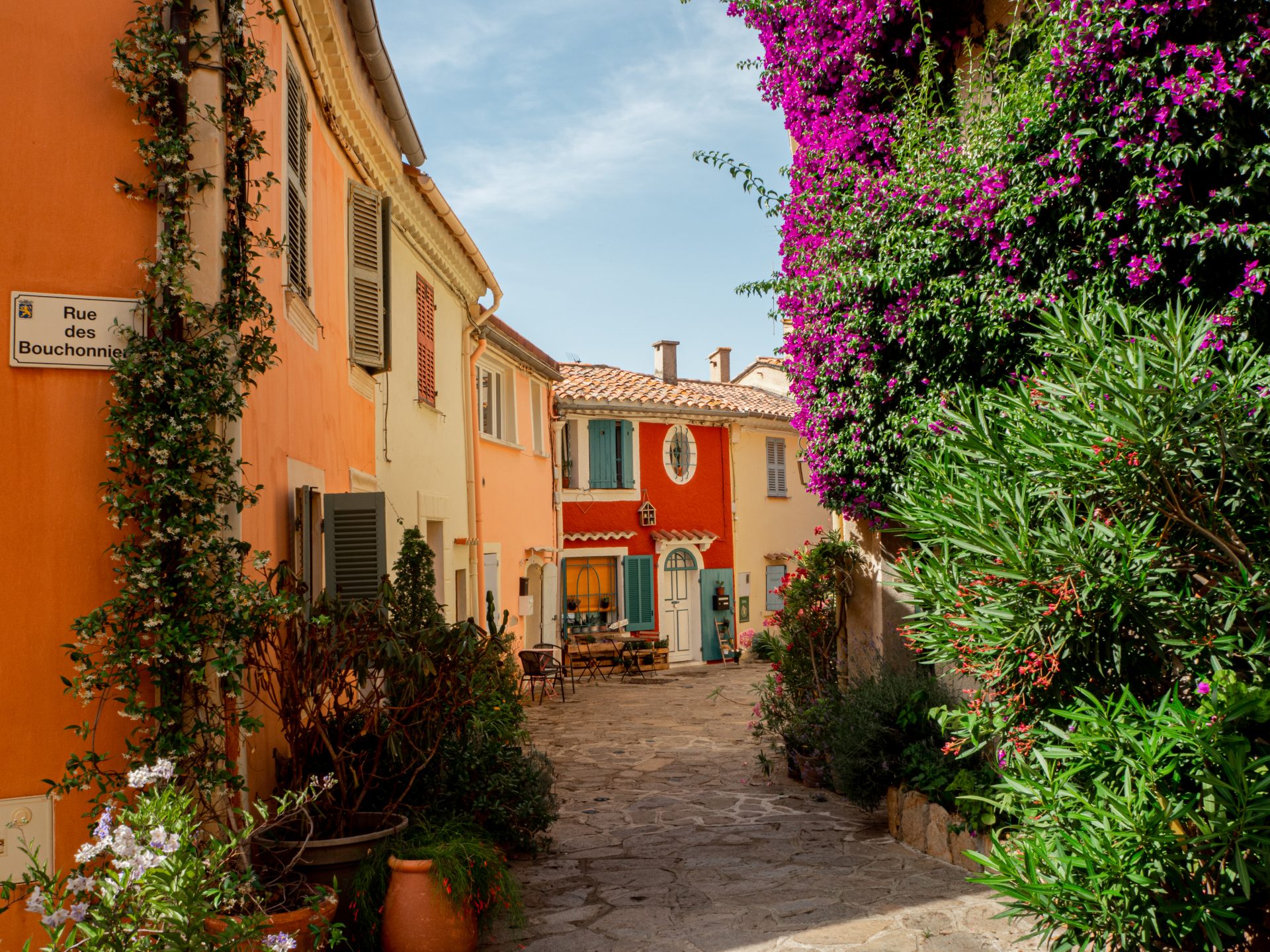
Carnot street
It is the liveliest street in the village where shopkeepers and creators mingle. You can find numerous souvenirs of Bormes les Mimosas here. From a historical perspective, it divides the village into two parts: the medieval part from the 12th century to the north, and the part from the 16th century to the south. It is lined with medieval gates, the oldest of which, located at No. 85 of this street, dates back to 1577.
Saint-Trophyme church
Built between 1775 and 1783, its style is inspired by Romanesque architecture. It is renowned in France for being frequented by presidents of the Republic, notably Jacques Chirac, who visited regularly during his stays at Fort de Brégançon. The connection between this church and French heads of state is so strong that even its square is named after Georges Pompidou.
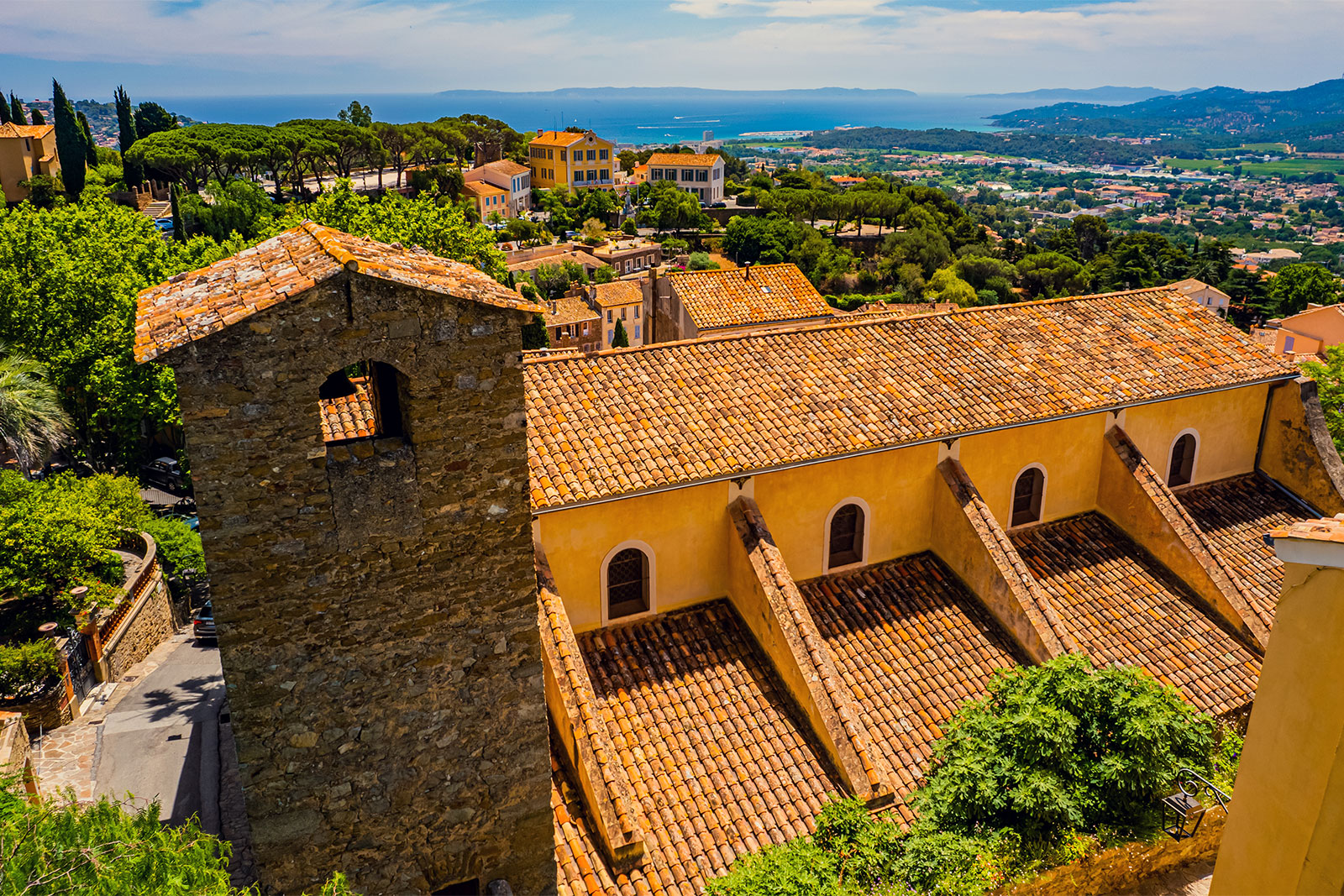
Bougainvilliers street
From this flowery street overlooking the church, you can see a large yellow building (the Grand Hôtel) and the Castle of the Lords of Fos. A true paradise of vegetation, you can observe a collection of sages, hibiscus, and extravagant bougainvilleas.
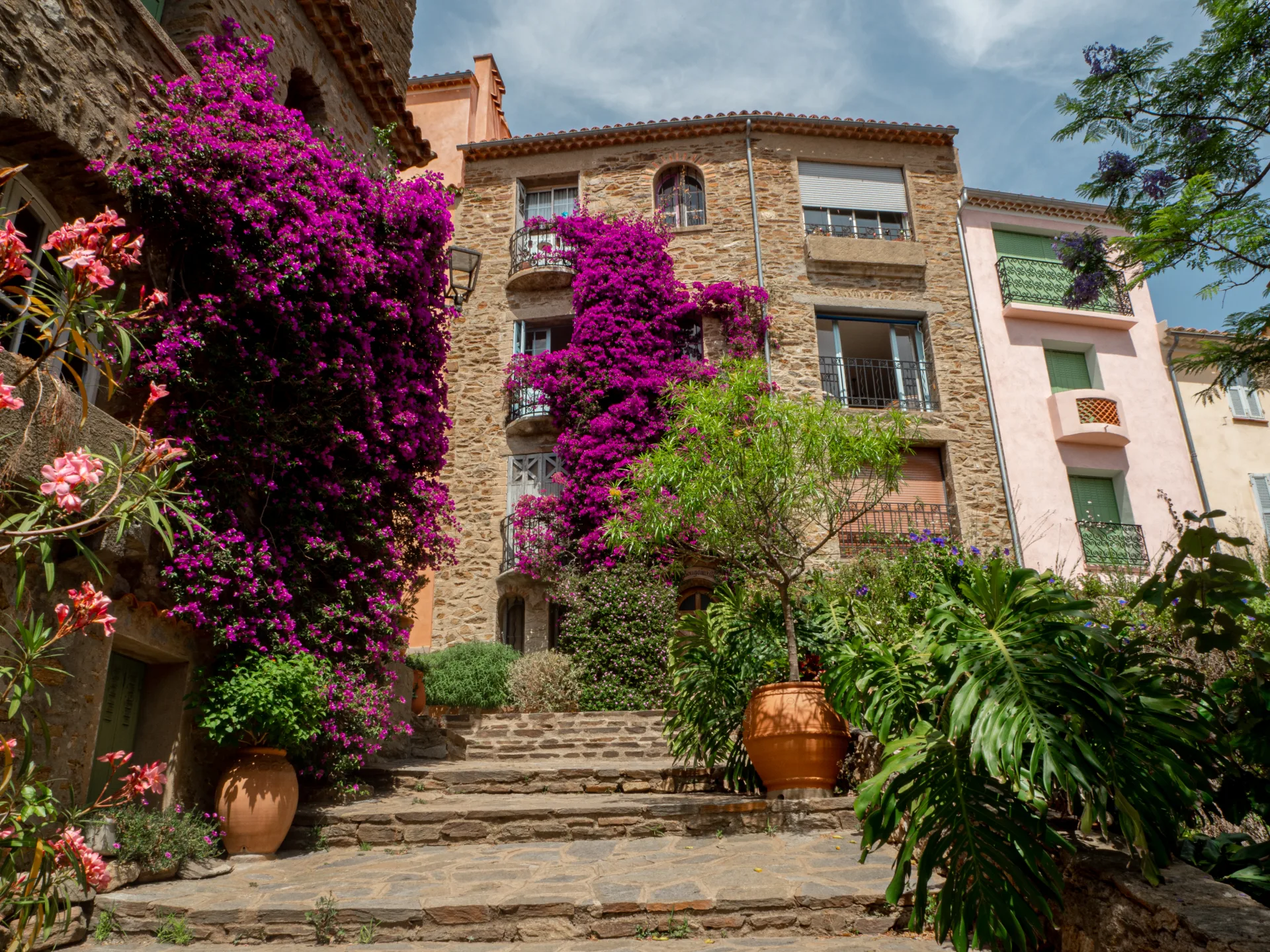
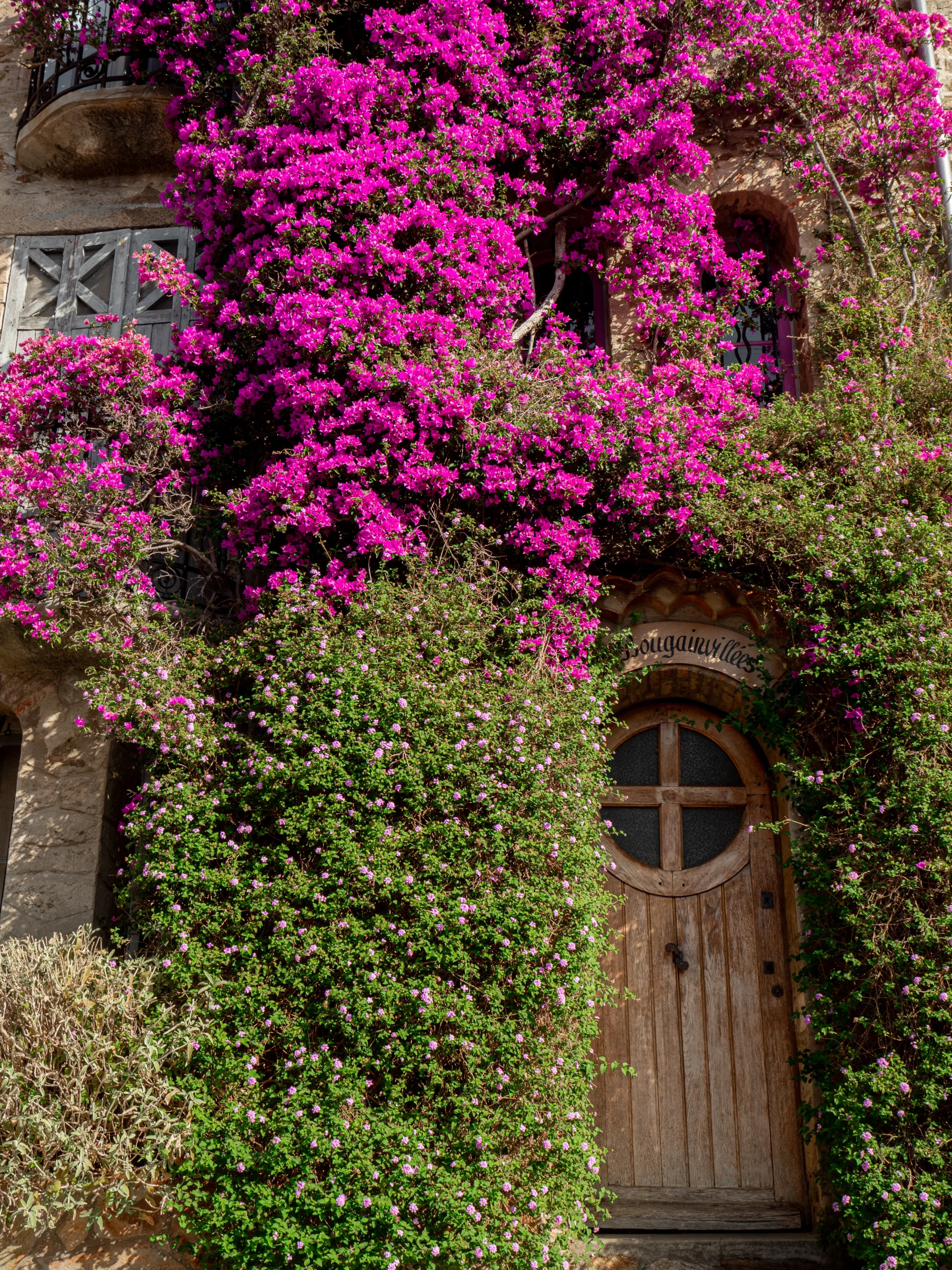
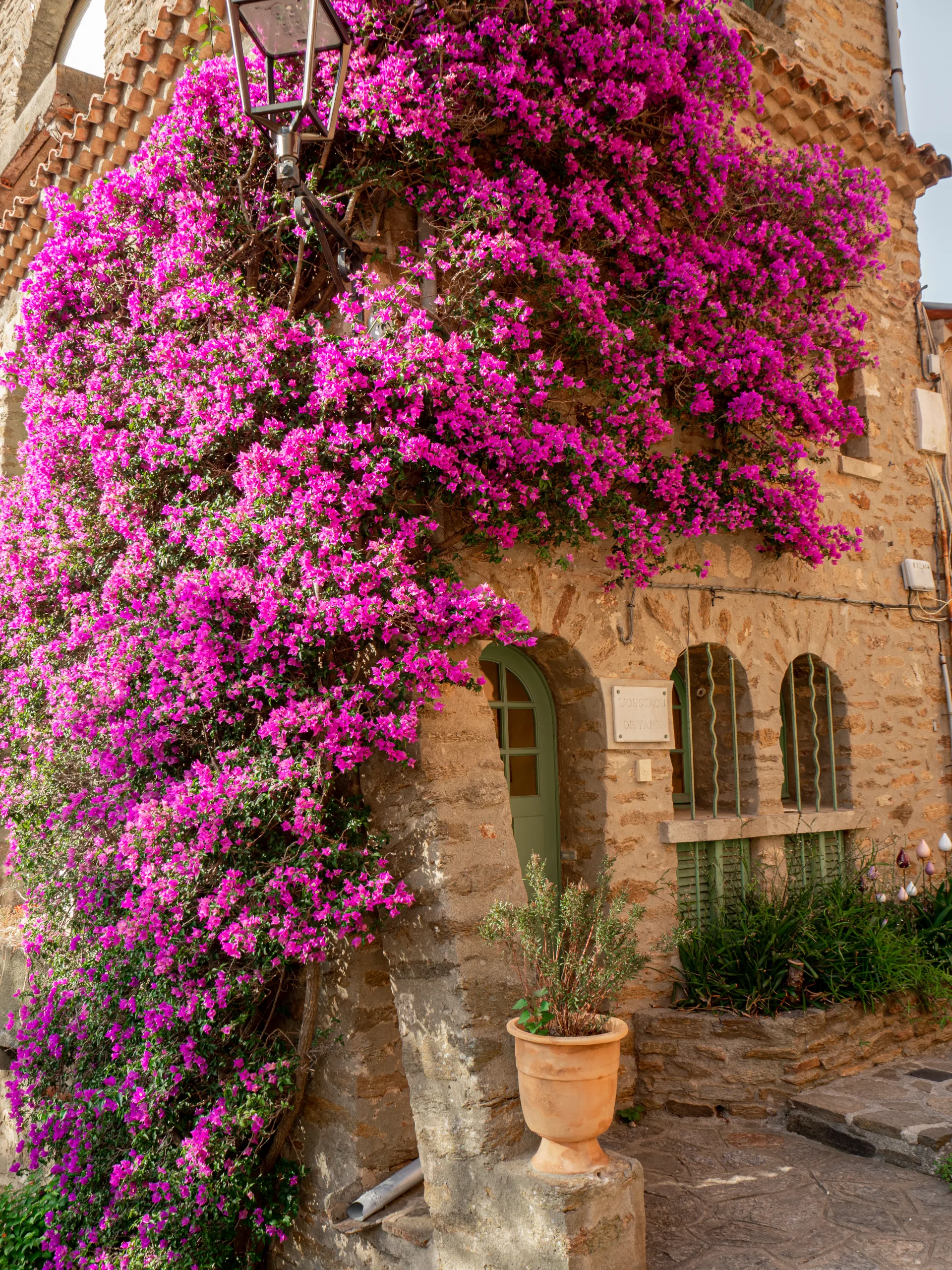
The lovers’ alley
This charming little alley with an evocative name has an intimate feel due to its profusion of plants. Discover local artisanal products there.
The Fig Tree Square
Prepare to be captivated as we arrive at Place du Figuier, a picturesque square adorned with brightly-colored houses and weathered facades. Immerse yourself in the charm of this tranquil haven, taking a moment to soak in the timeless beauty that surrounds you.
The Republic Well Square
At this location, you can find the facade of the former cork factory of Bormes, which disappeared in 1945. Cork stoppers were manufactured there, but also the “Faucos” or “couasses”, the pieces of cork bark in which bouillabaisse is traditionally served. A true Provençal craftsmanship.
The Bazaar Square
It is named as such because in the past, it was the liveliest district of Bormes, bustling with merchants and villagers. Today, it is primarily frequented to reach the upper part of the village via Rompi Cuou Street.
Cigalou park
Laid out on hillsides with pergolas and paths lined with eucalyptus, centuries-old cedars, and palm trees, it extends over 8877m2. Every year, in winter, it hosts the major event “Mimosalia,” an open-air exhibition showcasing collectible plants, rare vegetation, and other unusual varieties.
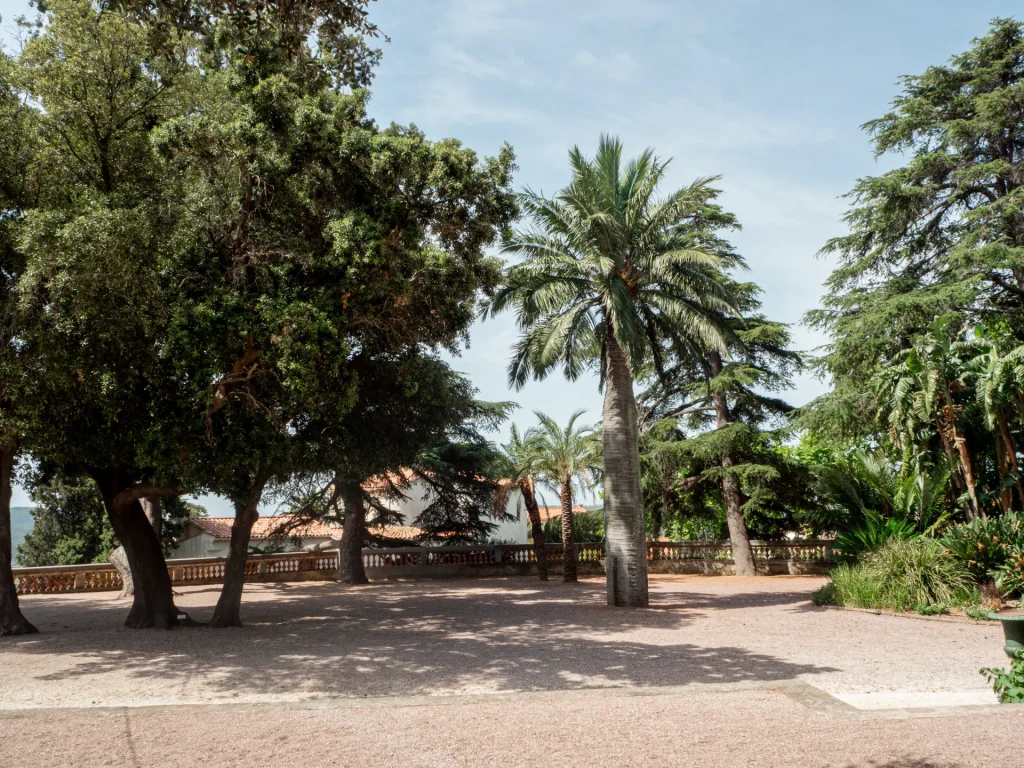
Gonzalez park
The botanical garden consists of Australian vegetation, including a collection of acacias (mimosas), banksia, eucalyptus, grevillea, hakea, and eremophila. The park was awarded the remarkable garden label in 2015.
